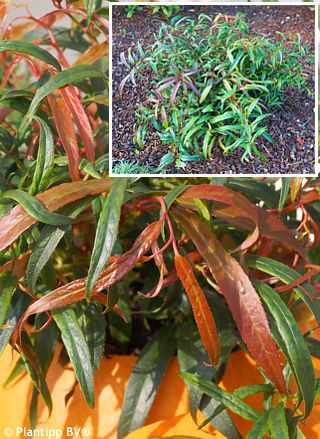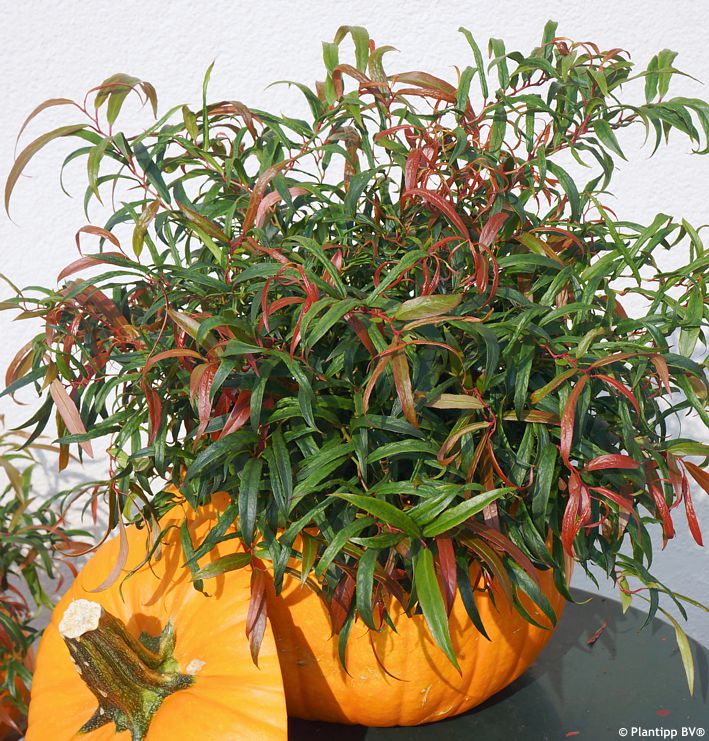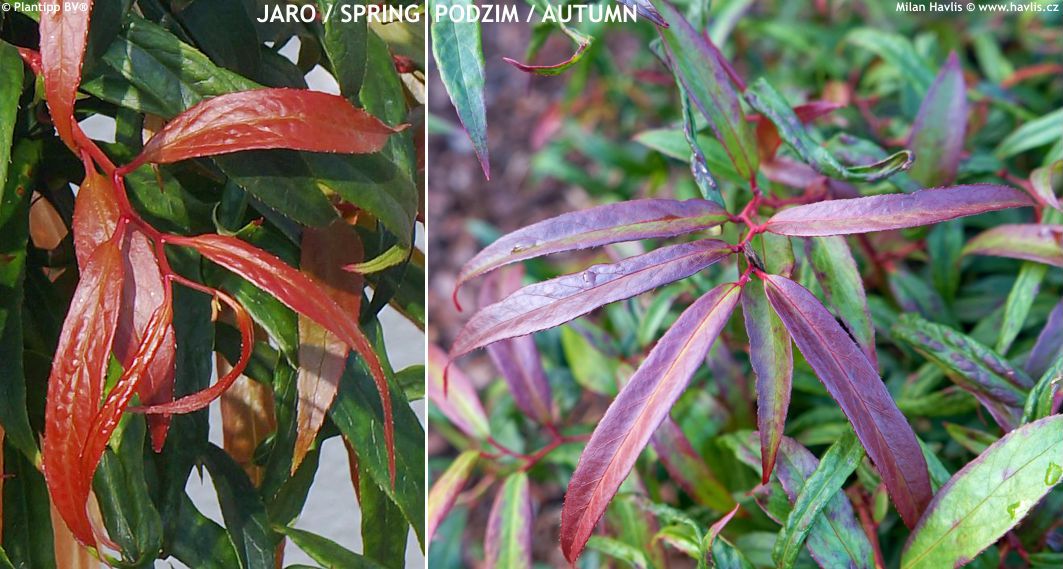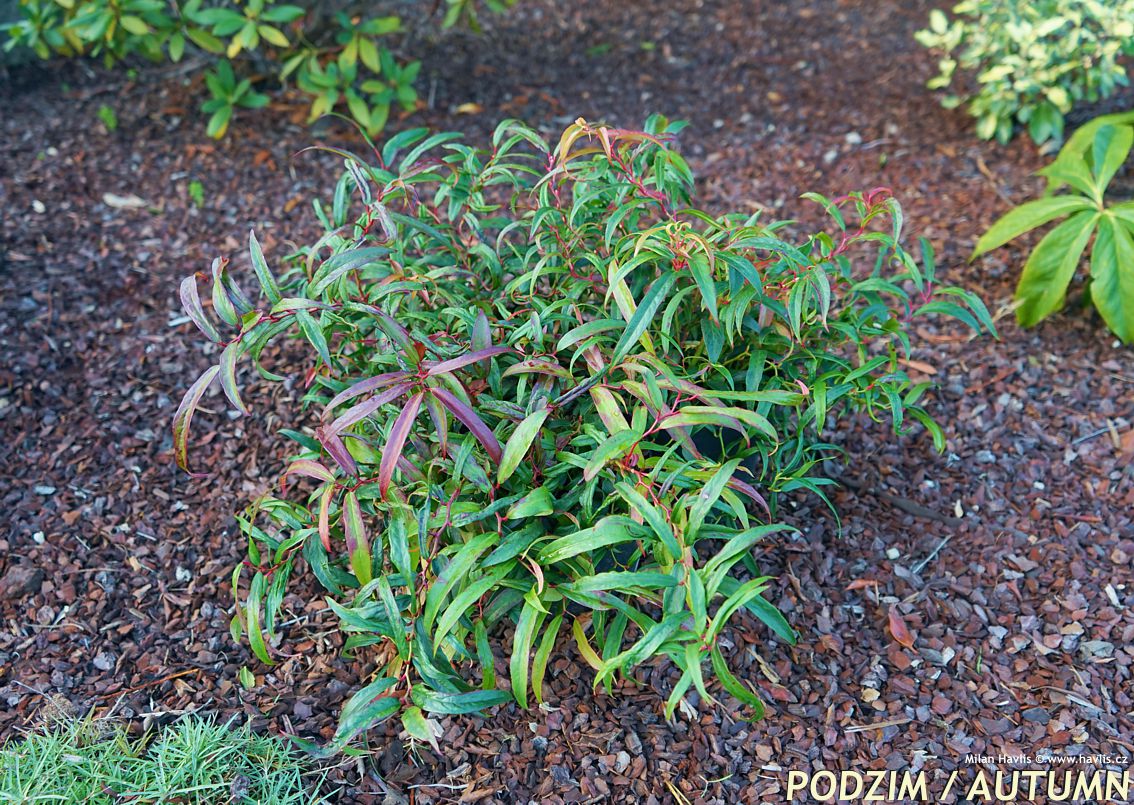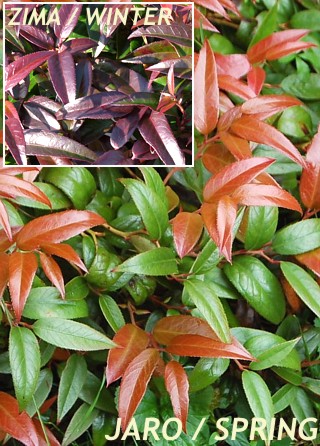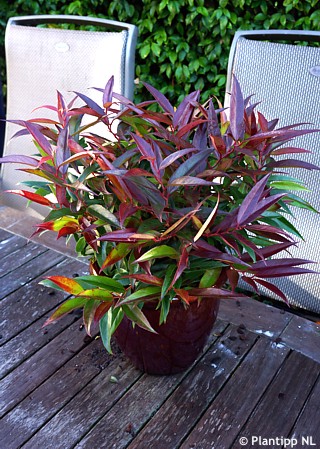Leucothoe keiskei 'Opstal16' HALLOWEEN leucothoe
Leucothoe
In Central Europe leucothoe genus is a relatively new group of plants that gains more and more attention and admirers, including me. They are low or prostrate evergreen shrubs with leathery leaves and usually excellent hardiness. Various species originate in various parts of ther globe - Madagascar, the Himalayas, Japan, N. and S. America. Dutch breeder Ron van Opstal from Zundert has already selected a few evergreen plants including leucothoe and photinia and this variety is another success of his from 2014 when it was awarded Gold Medal and Best Novelty at Groen Groen Plus exhibition in the Netherlands.
HALLOWEEN is a compact Japanese leukotoe producing unusually narrow leaves. They are evergreen, leathery, acuminate, narrowly lance-shaped, and very glossy. When they emerge in mid spring and several more times during the season they are deep orange brown, and in autumn they change to deep burgundy red. Then the whole shrub slowly turns deep burgundy red and remains so until hot spring days when the leaves change back to green. In late April and May appear small, urn-shaped, insignificant, white flowers. Twigs with spent flowers should be removed immediately after flowering to prevent the plant from making seeds, and thus exhausting it.
Leucothoe will find its place almost anywhere. Being compact and quite low it can be placed among other shrubs of similar type (rhodos, azaleas, kalmias), it will brighten up a conifer bed, and make a statement in a perennial bed especially in low season when other plants are dying off or not emerged yet. Thanks to extremely narrow leaves the habit is airy yet nicely rounded. Pruning is usually not needed but can be done in early spring. Japanese leucothoe is one of the hardiest evergreen shrubs that do well even in cold outdoor pots.
Leucothoe grows naturally at the woodland edge or under trees which tells us that it is used to anything from filtered sun to deep shade. However, our tests proved that it lives happily in full sun, too, where it will show better red if given adequate moisture. As an ericaceous plant it requires soil that is light, acidic, and constantly moist (not wet). If your garden soil is too heavy do not dig a deep hole but make a shallow and wide bed, topped up with a good mixture of peat, fine bark, and leaf (forest) litter. Keep the soil moist by mulching. Slow-release fertilizers are advised. It is very hardy to about -29°C (USDA zone 5), and suitable for outdoor pots.
Last update 01-11-2019

































